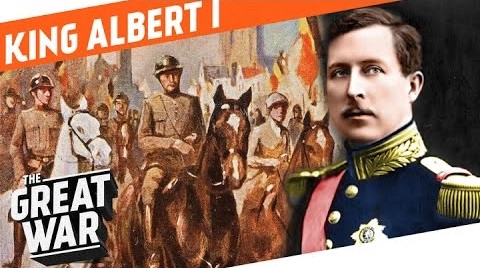Flemish nationalism grew stronger during his reign: Who is Albert I?
In 1914, when World War I broke out, the German emperor Wilhelm II, disregarding the treaties of neutrality, gave an ultimatum to Albert I informing him that German armies would pass through Belgian territory.

(1875-1934) King of Belgium. He was the Commander-in-Chief of the Belgian army during World War I, and after the war, he tried to improve the country's economy. He was born on April 8, 1875, in Brussels. He died on February 17, 1934, in Marcheles-Dames, in southern Belgium. He is the son of Philippe, Count of Flanders, and Marie, Princess of Hohenzollern. In 1900 he married the daughter of the Bavarian duke. Leopold (later to the throne as Leopold III) had three children, Charles and Marie Jose. Upon the death of his uncle Leopold II in 1909, he ascended to the throne as Albert I.
Albert I was the third King of the Belgians from 1909 to 1934. During the First World War, he led the army against the Germans and later, helped his country rebuild during the post-war and the depression period. Born to the Count of Flanders, Prince Philippe of Belgium, he was third in line of succession to the then King, Leopold II of Belgium.
In Belgium, which is governed by a parliamentary monarchy, before World War I, the Catholic Party was the majority in the parliament. During this period, the people were struggling to change the electoral law and gain universal suffrage. Because the electoral law from 1893 gave some citizens multiple votes according to age, income, family, and education, and about two-fifths of the electorate could cast two or three votes. As a result of a strike to protest this situation on April 14-24, 1913, the government assured that this law would be changed; but the outbreak of World War I delayed this change.
On August 1, 1914, when World War I broke out, the German emperor Wilhelm II, who disregarded the 1893 neutrality treaties, gave an ultimatum to Albert I on August 2 that the German armies would pass through Belgian territory. When Albert refused this ultimatum, Germany started the invasion of Belgium on 4 August and entered Brussels on 20 August. The Belgian army, headed by Albert I, was forced to retreat behind the Yser River; Albert I set up headquarters at La Panne, in the unoccupied part of Belgium. The Belgian Government of National Unity, composed of liberals, Catholics, and socialists, was settled in Le Havre, France. The Belgian Army defended Liege and Antwerp, preventing the Germans from crossing Dunkerque and Calais, and collaborating with the Allies in trench warfare. At the beginning of the Allied general offensive in 1918, King Albert I commanded the Belgian armies.
Despite being the country that suffered the most in World War II, Belgium recovered in a short time. On May 6, 1919, Albert I and the government announced the abolition of multiple suffrages. Some women were also given the right to vote. With the Treaty of Versailles, Eupen, Malmedy, and Moresnet on the German border were given to Belgium. Again, as a result of an agreement reached with England in 1919, Belgium was given the right of the mandate over Rwanda and Urundi, which was under German rule before, and these countries were attached to the Belgian Congo.
In the following years, Albert I directed the restoration of the country and the development of the industry destroyed by the German occupation. In 1926, the king was given the right to rule alone for six months to avoid the financial crisis. After the 1929 World Depression, which also affected Belgium, extraordinary powers were given to the government in 1932 to eliminate the budget deficit.
Under Albert, Flemish nationalism had grown stronger. In 1922, Flemish was adopted as an official language along with French. In 1932, Belgium was divided into two language regions. The official language of the Wallonian states is French, and that of Flanders is Flemish.
